Water is essential for life, but did you know there are animals that can survive without ever drinking it? These fascinating creatures have evolved incredible adaptations to thrive in some of the most arid environments on Earth. In this article, we will explore what animals do not drink water and uncover the remarkable ways they obtain and conserve moisture to survive.
The kangaroo rat is one of the most famous examples of an animal that doesn't drink water. Found in the deserts of North America, this small rodent has evolved to live in some of the driest environments on the planet, where free-standing water is extremely scarce.
Water from Food: Kangaroo rats primarily feed on dry seeds, which may seem counterintuitive in such an arid climate. However, they are able to extract water from their food through metabolic processes. During digestion, the breakdown of carbohydrates in the seeds produces water, which the kangaroo rat uses to hydrate its body.
Extremely Efficient Kidneys: Kangaroo rats have highly specialized kidneys that allow them to conserve nearly all of the water they produce or consume. Their urine is extremely concentrated, allowing them to retain moisture and expel only small amounts of waste.
No Sweat or Panting: These rodents don’t sweat or pant like many other animals, which helps them avoid losing moisture through evaporation. They can survive months or even years without drinking water, relying entirely on their metabolic processes for hydration.
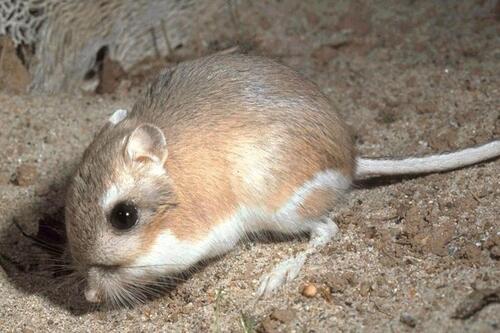
The thorny devil is a small lizard native to the Australian desert. Like the kangaroo rat, it has developed unique ways of surviving in an environment where water is hard to come by, and it never needs to drink directly.
Collecting Dew and Moisture: One of the thorny devil's most remarkable adaptations is its ability to collect water through its skin. The lizard’s body is covered in grooves and channels that allow it to capture dew from the air and funnel it towards its mouth. This method enables the thorny devil to stay hydrated in an environment with little or no standing water.
Dietary Moisture: In addition to collecting water from the air, thorny devils feed on ants, which provide a small but consistent source of moisture. By consuming large numbers of ants, they can obtain the necessary hydration for survival.
This lizard's unique method of drinking through its skin makes it one of nature’s most efficient water collectors.

The desert tortoise is another animal adapted to life in the harsh desert environment, particularly in the southwestern United States. These tortoises have evolved to withstand long periods of drought without needing to drink water.
Storing Water: Desert tortoises have large bladder capacities that allow them to store water for long periods. They can absorb water from food and vegetation, and during rare rainfalls, they will drink and store enough water in their bladder to survive through extended dry periods.
Burrowing: To avoid losing moisture through heat and evaporation, desert tortoises spend much of their time underground in burrows. This helps them stay cool and retain body moisture during the hottest parts of the day.
Moisture-Rich Diet: These tortoises also feed on cacti, grasses, and flowers, which contain enough moisture to sustain them for long periods.
By combining water storage, efficient feeding habits, and strategic burrowing, the desert tortoise has mastered survival without regular access to drinking water.

The sand gazelle, native to the deserts of the Arabian Peninsula, has a fascinating way of surviving extreme heat and arid conditions. While it does drink water when available, it can survive for long periods without drinking by relying on unique physiological adaptations.
Body Shrinkage: One of the most surprising adaptations of the sand gazelle is its ability to shrink its liver and heart to reduce the amount of water it needs to survive. By reducing its metabolic rate, the gazelle conserves water and energy during times of drought.
Extracting Water from Food: Like many other desert animals, sand gazelles obtain most of their water from the food they eat. They feed on moisture-rich plants, which provide them with the necessary hydration.
No Sweating: Sand gazelles, like other desert-adapted animals, do not sweat to avoid losing precious moisture through their skin.
This antelope's ability to shrink its body and survive with minimal water intake makes it one of the most resilient desert dwellers.
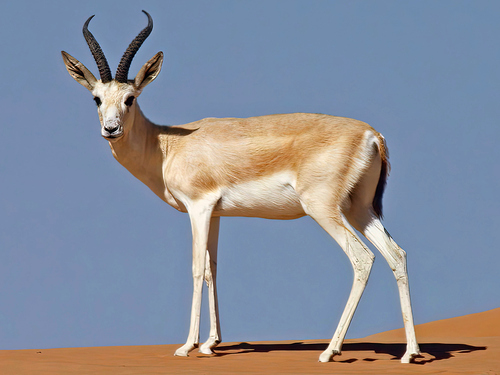
The addax antelope is another desert inhabitant that can live without drinking water. Native to the Sahara Desert, this large mammal has evolved to survive in one of the harshest environments on Earth.
Water from Food: Addax antelopes feed on desert grasses and plants, which provide enough moisture for them to survive. These plants often contain dew or store water within their tissues, allowing the addax to meet its hydration needs.
Efficient Water Retention: Like many desert animals, addax antelopes have highly efficient kidneys that conserve water by producing very concentrated urine.
Avoiding Heat: Addax antelopes are most active during the cooler parts of the day, such as early morning or late evening. This behavior helps them avoid the heat of the desert and reduces the need for water.
This remarkable antelope can live its entire life in the desert, rarely, if ever, drinking water.
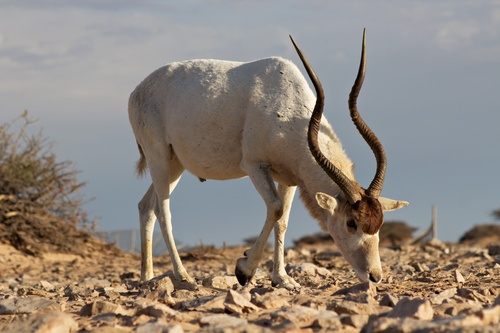
Although not a desert animal, the koala is another animal that does not need to drink water under normal conditions. These iconic Australian marsupials obtain nearly all of their hydration from the eucalyptus leaves they consume.
Moisture from Leaves: Koalas eat eucalyptus leaves, which contain a high percentage of water, particularly after rain. This moisture provides koalas with most of the hydration they need.
Limited Water Loss: Koalas have adapted to a low-energy lifestyle, spending most of their time resting in trees to conserve energy and minimize water loss. This helps them retain moisture and survive on their water-rich diet.
While koalas will drink water during extreme drought conditions, they are primarily reliant on the moisture content of their food for hydration.
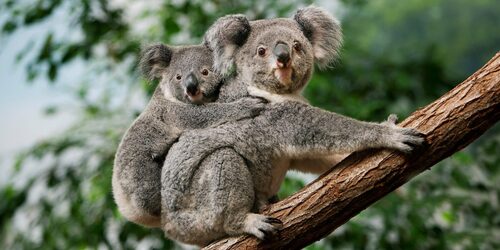
Animals that don't drink water have evolved incredible strategies to survive in some of the most extreme environments on Earth. From the kangaroo rat’s metabolic water production to the thorny devil’s ability to collect dew, these creatures demonstrate the remarkable adaptability of life in the face of adversity.
Understanding what animals do not drink water and how they survive without this essential resource highlights the wonders of evolution and nature’s ability to adapt to even the harshest conditions. Whether they live in deserts, forests, or other challenging habitats, these animals remind us of the incredible resilience and diversity of life on Earth.
animal tags: Water
We created this article in conjunction with AI technology, then made sure it was fact-checked and edited by a Animals Top editor.
you may also like
Guide dogs are specially trained dogs that can help blind people navigate and move around in their daily lives. Although guide dogs usually do not directly understand traffic light signals, they can help blind people safely navigate road traffic by following their owners' instructions and tra...

Eating dry millet by chicks may cause them to choke or cause other health problems, depending on the size of the millet and the age and size of the chick. Millets are relatively large food particles that may pose a risk of throat blockage or tracheal obstruction in young chicks. Additionally,...

马尔济斯犬的牛子过大可能是由于以下几个原因:1. 饮食问题:如果您的马尔济斯犬吃了过多的高热量、高脂肪或高蛋白的食物,会导致体重增加和牛子变大。建议为您的马尔济斯犬提供适当的饮食,包括营养均衡的专业犬粮和适量的零食。2. 缺乏运动:马尔济斯犬如果长时间缺乏运动,就会导致体重增加和牛子变大。要确保每天为犬只...

Scientists from the fish transgenic engineering group of the Institute of Hydrobiology, Chinese Academy of Sciences, under the leadership of Academician Zhu Zuoyan, injected the growth hormone gene of grass carp into the fertilized eggs of carp, and bred a transgenic carp F1 generation with grass ca...
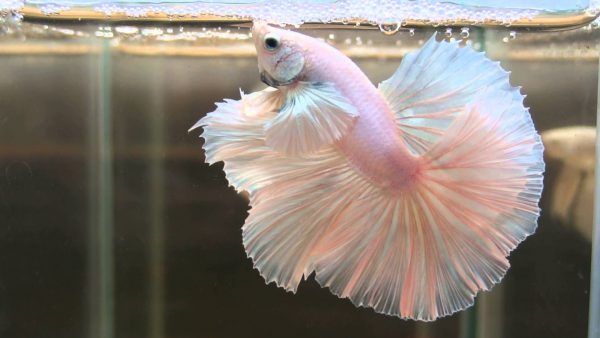
Betta fish, also known as Siamese fighting fish, are a popular choice for aquarium enthusiasts due to their vibrant colors and striking personalities. However, one of the most common questions that prospective betta owners ask is: How long do betta fish live? Understanding the lifespan of betta fish...

A bee sting can cause pain and discomfort, here are some suggestions: 1. Immediate observation: Check the stung area as soon as possible to confirm whether there are bee stings remaining on the skin. If there is, gently scrape it off with a toothpick or fingernail and avo...

If your puppy accidentally eats raw meat, here are some suggestions: 1. Observe the dog’s condition: Closely observe the puppy’s behavior and condition. In most cases, eating a small piece of raw meat does not usually cause serious problems, but if you experience signif...

In the animal kingdom, there are many incredible examples of regeneration, from lizards growing back their tails to starfish regenerating lost limbs. But when it comes to something truly extraordinary, few creatures can match the ability to regrow their own head. So, what animal can perform this see...
Email: jsset668#gmail.com (change # to @) Please indicate your purpose of visit! Guangdong ICP No. 2022053326 XML| map| Chinese

